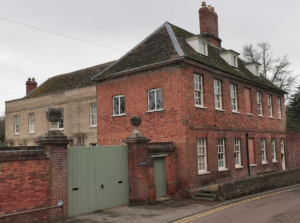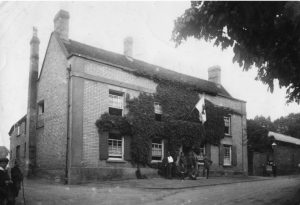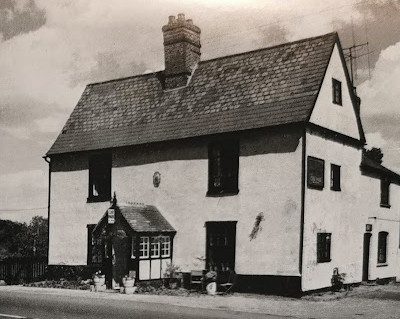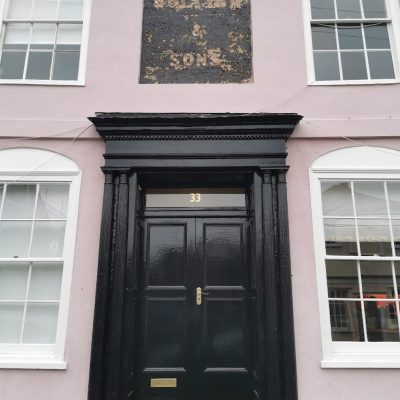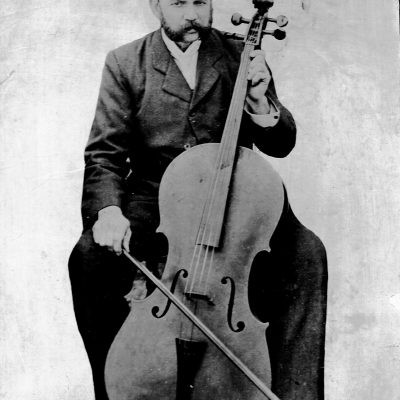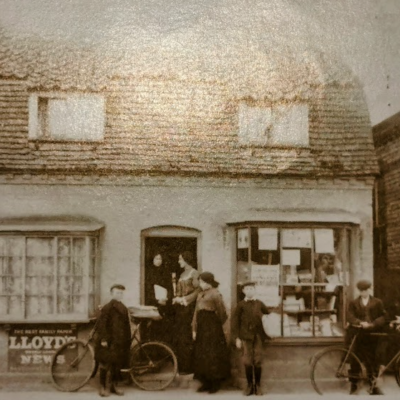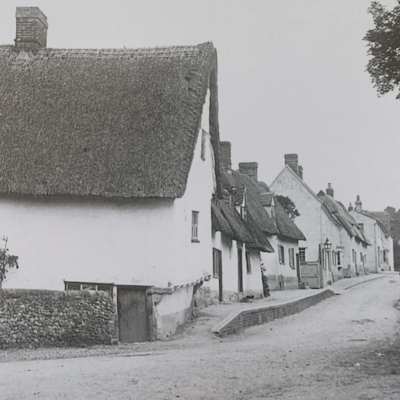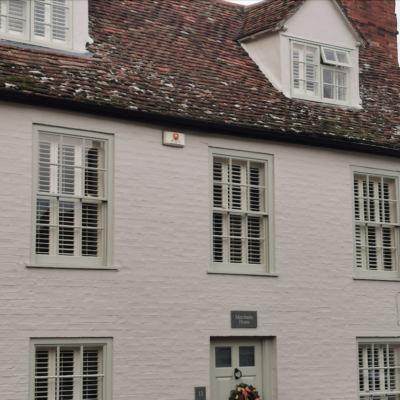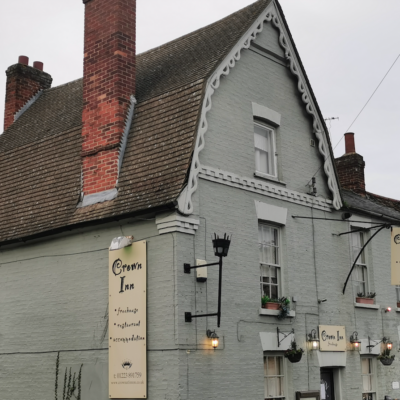Search by topic
- archaeology
- Building of Local Interest
- charity
- church
- crime
- dressmaker
- fire
- Great Eastern Railway
- Listed building
- Mapping Relief
- medieval
- oral history
- poverty
- Public House
- Rattee & Kett
- Religious House
- Roman
- scholar
- school
- Then and Now
- tudor
- women
- work
- world war one
- world war two
Search by text
 Linton House (1913)
Linton House (1913)64 High Street, (Linton Priory) Linton
History of 64 High Street
Listed Building:
Large house, originally two separate buildings. Late C17 and c.1690 with late C18 and late C19 alterations. Late C17 red brick with stone dressings, C19 red brick and late C18 gault brick, late C18 stucco to west facade. Plain tiled hipped roofs. Main building forming north-south U-plan range of two storeys with attics and cellars, linked in C19 to earlier building converted to a service wing of two storeys and attics with an original lobby entry plan facing the street.
The west doorcase is said to have been introduced from Catley Park (demolished c.1770 by Edmund Keen Bishop of Ely). The house remained empty from 1851 – c.1880. (Historic England)
W M Palmer’s guided tour of Linton (pub 1913) stopped here on the day in question because the group ran out of time.
In 1913 the house was owned by Mrs Berney Ficklin. Palmer told his party that:
Three hundred years ago and before, all this piece of ground between the village street outside the wall and the road leading to Our Lady’s Bridge, belonged to the Parsonage of Linton, Pembroke College being then parsons. In early times the owners had been a Norman Abbey, to whom the great tithes of Linton had been given by an Earl of Richmond, soon after the conquest. For about 250 years after the Norman conquest a foreign monk lived in the parsonage house which stood on the site of this house and managed the glebe and superintended the gathering of the tithe for the benefit of the Abbey. He was called the prior of Linton because he was a monk and there was probably never a house of religious men at Linton as there was at Barham.
In 1599, Robert Hills, John Jellybrand, John Newman and Richard Odell, all lived on the space now occupied by this house and stables.
The present house, although it looks older, was built about 1700. There is a definite statement to that effect amongst Mrs Ficklin’s deeds. A Linton man deposed in a law suit that he remembered the house standing on the corner of the parsonage ground, next the highway, called “The Great House,” being built by John Lone about 1700.
John Lone was a pushing Whig lawyer of considerable wealth who caused much ill feeling in the village. He died in 1700. …. Lone’s estate was sold and the next inhabitant of this house we read about was Sutton John Coney…. Coney died in 1748 and was buried on the south side of the church.
It came into the possession of Edmund Keen, Bishop of Ely about 1770. …. From 1772 to 1852, the two Edmund Fishers, who were successively vicars of Linton, owned the house and lived here. In 1882 it was bought by the late Mr Ficklin … it was then a desolate abode. It had been uninhabited for some years and was reputed to be haunted.
During World War One the building was used as a Red Cross VAD hospital.
At some date between 1086 and 1163 two estates in Isleham and Linton were given to the Abbey of St Jacut in Brittany. By 1229 there was a Prior at Linton appointed from Brittany. The last known prior was appointed in 1405 but as an alien priory the estate was seized by the Crown in 1414. By 1450 they had been given to Pembroke College. the site was split up by Pembroke and the priory buildings had all been demolished by 1600. The exception was the barn which was demolished in 1912.
Contribute
Do you have any information about the people or places in this article? If so, then please let us know using the Contact page or by emailing capturingcambridge@
License
This work is licensed under CC BY-NC-SA 4.0





